Volume 9-14 (2020-26)
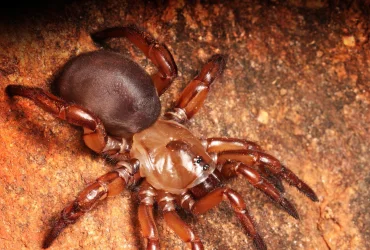 v14i1.352
v14i1.352eISSN: 1800-427X (online)
DOI:10.47605/tapro.v14i1.352
Submitted date: 28 August 2024
Accepted date: 25 April 2025
Published date: 27 May 2025
Pp. 58–64.
SYSTEMATICS OF Heimioporus retisporus (PAT. & C.F. BAKER) E. HORAK (AGARICOMYCETES: BOLETACEAE), AN EDIBLE WILD MUSHROOM FROM SOUTHEAST SULAWESI, INDONESIA
Ivan P. Putra*, Oktan D. Nurhayat, Sitti A.A. Taridala, Elis N. Herliyana, Anastasia T. Hartati & Andi B. Patadjai
*Corresponding author. E-mail: ivanpermanaputra@apps.ipb.ac.id
Abstract
The genus Heimioporus was previously proposed as Heimiella by Boedijn from Indonesian specimens. Currently, the knowledge of Indonesian Heimioporus is limited due to a lack of field sampling. The only notable Heimioporus from Indonesia is jamur pelawan (local name), a wild edible mushroom from Bangka-Belitung Province, for which the taxonomical identity remains unclear. During a mushroom collecting field trip near Kendari (Indonesia) in 2024, a wild edible bright red bolete mushroom resembling Heimioporus was encountered, and specimens were collected. The current study confirms the taxonomical identity of our specimens. Fresh fruiting bodies were evaluated for morphological and molecular evidence. The basidiomata were described based on the macro- and micromorphological characteristics. Molecular analysis and phylogenetic tree construction were performed using the ITS (Internal Transcribed Spacer) locus. The combination of morphological and molecular analyses confirmed our collection as H. retisporus. Our study proves that the previous Indonesian Heimioporus collection from Bangka-Belitung Province was not H. retisporus. The indigenous people in the area where H retisporus was collected consume this wild edible mushroom and sell it at local markets.
Key words : Basidiomycota, Fungi, Hemioporus, Heimiella, morphology, phylogeny, taxonomy
Section Editor: Samantha C. Karunarathna
DOI:10.47605/tapro.v14i1.352
Submitted date: 28 August 2024
Accepted date: 25 April 2025
Published date: 27 May 2025
Pp. 58–64.
SYSTEMATICS OF Heimioporus retisporus (PAT. & C.F. BAKER) E. HORAK (AGARICOMYCETES: BOLETACEAE), AN EDIBLE WILD MUSHROOM FROM SOUTHEAST SULAWESI, INDONESIA
Ivan P. Putra*, Oktan D. Nurhayat, Sitti A.A. Taridala, Elis N. Herliyana, Anastasia T. Hartati & Andi B. Patadjai
*Corresponding author. E-mail: ivanpermanaputra@apps.ipb.ac.id
Abstract
The genus Heimioporus was previously proposed as Heimiella by Boedijn from Indonesian specimens. Currently, the knowledge of Indonesian Heimioporus is limited due to a lack of field sampling. The only notable Heimioporus from Indonesia is jamur pelawan (local name), a wild edible mushroom from Bangka-Belitung Province, for which the taxonomical identity remains unclear. During a mushroom collecting field trip near Kendari (Indonesia) in 2024, a wild edible bright red bolete mushroom resembling Heimioporus was encountered, and specimens were collected. The current study confirms the taxonomical identity of our specimens. Fresh fruiting bodies were evaluated for morphological and molecular evidence. The basidiomata were described based on the macro- and micromorphological characteristics. Molecular analysis and phylogenetic tree construction were performed using the ITS (Internal Transcribed Spacer) locus. The combination of morphological and molecular analyses confirmed our collection as H. retisporus. Our study proves that the previous Indonesian Heimioporus collection from Bangka-Belitung Province was not H. retisporus. The indigenous people in the area where H retisporus was collected consume this wild edible mushroom and sell it at local markets.
Key words : Basidiomycota, Fungi, Hemioporus, Heimiella, morphology, phylogeny, taxonomy
Section Editor: Samantha C. Karunarathna
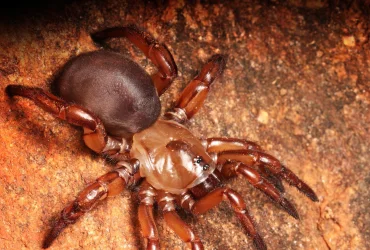 v14i1.351
v14i1.351eISSN: 1800-427X (online)
DOI:10.47605/tapro.v14i1.351
Submitted date: 7 June 2024
Accepted date: 25 April 2025
Published date: 26 May 2025
Pp. 48–57.
MORPHOLOGICAL CHARACTERIZATION OF CHILI LANDRACES WITH PHARMACEUTICAL POTENTIAL IN NORTHEAST INDIA
Marcus Vanlalremruatsaka, P.C. Lalrinfela, Rebecca Vanlalsangi, K. Zosangpuii, Fanai Lalsangluaii, Lalrosangpuii, Mathipi Vabeiryureilai*, Maria Lalhmingmawii, David Rosangliana & Samuel Lallianrawna
*Corresponding author. E-mail: m.vabeiryureilai@gmail.com
Abstract
Chili (Capsicum spp.) is a globally important crop valued for its culinary and pharmaceutical properties, particularly its capsaicin content. Mizoram, in Northeast India, is a recognized center of chili diversity, yet its native landraces remain under-characterized. This study aimed to identify and characterize 14 chili landraces collected from various sites across Mizoram, using morphological traits and capsaicin content as key parameters. Of the landraces examined, 12 were identified as C. frutescens and two as C. annuum. Cluster analysis based on 28 morphological traits grouped the landraces into two clusters with 36% similarity, confirming the usefulness of morphological descriptors for germplasm differentiation. All landraces exhibited high capsaicin content, with BC09 recording the highest (617.8 mg/100 g dry weight; 98,848 SHU) and BC12 the lowest (146.2 mg/100 g; 23,392 SHU). The findings underscore the exceptional pungency and morphological diversity of Mizoram's chili landraces and highlight their potential for pharmaceutical applications and elite breeding programs. This study provides a critical foundation for the taxonomic clarification, conservation, and global promotion of Mizoram chilies as regionally unique and commercially valuable genetic resources.
Key words : Capsaicin, capsicum, dendrogram, landrace, estimation, morphology, varieties
Section Editor: Carlos I. Arbizu
DOI:10.47605/tapro.v14i1.351
Submitted date: 7 June 2024
Accepted date: 25 April 2025
Published date: 26 May 2025
Pp. 48–57.
MORPHOLOGICAL CHARACTERIZATION OF CHILI LANDRACES WITH PHARMACEUTICAL POTENTIAL IN NORTHEAST INDIA
Marcus Vanlalremruatsaka, P.C. Lalrinfela, Rebecca Vanlalsangi, K. Zosangpuii, Fanai Lalsangluaii, Lalrosangpuii, Mathipi Vabeiryureilai*, Maria Lalhmingmawii, David Rosangliana & Samuel Lallianrawna
*Corresponding author. E-mail: m.vabeiryureilai@gmail.com
Abstract
Chili (Capsicum spp.) is a globally important crop valued for its culinary and pharmaceutical properties, particularly its capsaicin content. Mizoram, in Northeast India, is a recognized center of chili diversity, yet its native landraces remain under-characterized. This study aimed to identify and characterize 14 chili landraces collected from various sites across Mizoram, using morphological traits and capsaicin content as key parameters. Of the landraces examined, 12 were identified as C. frutescens and two as C. annuum. Cluster analysis based on 28 morphological traits grouped the landraces into two clusters with 36% similarity, confirming the usefulness of morphological descriptors for germplasm differentiation. All landraces exhibited high capsaicin content, with BC09 recording the highest (617.8 mg/100 g dry weight; 98,848 SHU) and BC12 the lowest (146.2 mg/100 g; 23,392 SHU). The findings underscore the exceptional pungency and morphological diversity of Mizoram's chili landraces and highlight their potential for pharmaceutical applications and elite breeding programs. This study provides a critical foundation for the taxonomic clarification, conservation, and global promotion of Mizoram chilies as regionally unique and commercially valuable genetic resources.
Key words : Capsaicin, capsicum, dendrogram, landrace, estimation, morphology, varieties
Section Editor: Carlos I. Arbizu
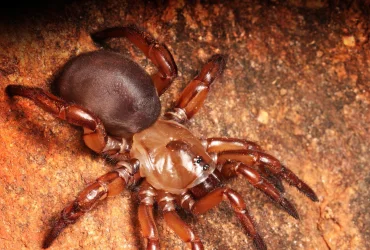 v14i1.350
v14i1.350eISSN: 1800-427X (online)
DOI:10.47605/tapro.v14i1.350
Submitted date: 27 January 2025
Accepted date: 25 April 2025
Published date: 26 May 2025
Pp. 39–47.
A NEW SPECIES OF TRAPDOOR SPIDER (ARANEAE: IDIOPIDAE: Heligmomerus) FROM THE SOUTHERN TIP OF INDIA
Akshay Khandekar*, Tejas Thackeray, Swapnil Pawar, Vivek Waghe & Satpal Gangalmale
*Corresponding author. E-mail: akshaykhandekar555@gmail.com
Abstract
A new species of the genus Heligmomerus is described based on 10 female specimens collected from the foothills of Pothaimalai, on the outskirts of the Kalakad-Mundanthurai Tiger Reserve, Tirunelveli District, Tamil Nadu, India. The new species is distinguished from all other Indian and Sri Lankan congeners in combination with several non-overlapping morphological characters. Detailed natural history of the new species, intraspecific variation in spermathecal morphology, and meristic and mensural data from the type series are given. Additionally, comments on the transfer of Idiops garoensis (Tikader, 1977) to the genus Heligmomerus by Sen et al. (2012) are provided.
Key words : Idiops garoensis, Morphology, Mygalomorphae, Peninsular India, Tamil Nadu, taxonomy
Section Editor: Danniella Sherwood
LSID:urn:lsid:zoobank.org
DOI:10.47605/tapro.v14i1.350
Submitted date: 27 January 2025
Accepted date: 25 April 2025
Published date: 26 May 2025
Pp. 39–47.
A NEW SPECIES OF TRAPDOOR SPIDER (ARANEAE: IDIOPIDAE: Heligmomerus) FROM THE SOUTHERN TIP OF INDIA
Akshay Khandekar*, Tejas Thackeray, Swapnil Pawar, Vivek Waghe & Satpal Gangalmale
*Corresponding author. E-mail: akshaykhandekar555@gmail.com
Abstract
A new species of the genus Heligmomerus is described based on 10 female specimens collected from the foothills of Pothaimalai, on the outskirts of the Kalakad-Mundanthurai Tiger Reserve, Tirunelveli District, Tamil Nadu, India. The new species is distinguished from all other Indian and Sri Lankan congeners in combination with several non-overlapping morphological characters. Detailed natural history of the new species, intraspecific variation in spermathecal morphology, and meristic and mensural data from the type series are given. Additionally, comments on the transfer of Idiops garoensis (Tikader, 1977) to the genus Heligmomerus by Sen et al. (2012) are provided.
Key words : Idiops garoensis, Morphology, Mygalomorphae, Peninsular India, Tamil Nadu, taxonomy
Section Editor: Danniella Sherwood
LSID:urn:lsid:zoobank.org
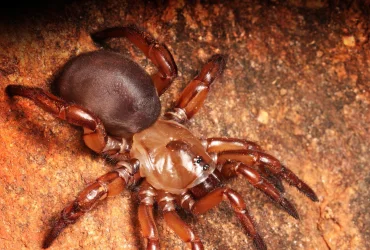 v14i1.349
v14i1.349eISSN: 1800-427X (online)
DOI:10.47605/tapro.v14i1.349
Submitted date: 10 January 2025
Accepted date: 25 March 2025
Published date: 25 April 2025
Pp. 25–38.
A NEW BLIND SKINK (REPTILIA: DIBAMIDAE: Dibamus) FROM BUTON ISLAND, INDONESIA
M. Dwi Prasetyo, D. Satria Yudha, A.A. Thasun Amarasinghe, Ivan Ineich, G.R. Gillespie & Awal Riyanto*
*Corresponding author. E-mail: awal.riyanto@gmail.com
Abstract
Blind skinks of the genus Dibamus are one of the least studied squamate taxa, only represented by a limited number of museum specimens. Here we study the taxonomy of Dibamus novaeguineae sensu lato in Indonesia by examining all the available museum specimens collected from Wallacea and mainland West Papua deposited at the Museum Zoologicum Bogorienese (MZB) and evaluate morphological and biogeographic evidence. We also include all published data on specimens that were attributed to that species. Dibamus novaeguineae is widely distributed throughout mainland Papua, Maluku, Sulawesi, and adjacent islands, the Lesser Sunda Islands, and the Philippines. We compare D. novaeguineae sensu stricto on Papua and sensu lato populations on the Lesser Sunda Islands and demonstrate that the D. cf. novaeguineae population on Buton Island represents a distinct endemic phenotype. Based on morphological and scalation differences, we here describe this isolated population on Buton, an island off the coast of southeastern Sulawesi, as a new species. We further discuss the biogeography of that new species.
Key words : Dibamus novaeguineae, Lesser Sunda, Moluccas, Morphology, Sulawesi, Taxonomy
Section Editor: Nikolay A. Poyarkov
LSID:urn:lsid:zoobank.org
DOI:10.47605/tapro.v14i1.349
Submitted date: 10 January 2025
Accepted date: 25 March 2025
Published date: 25 April 2025
Pp. 25–38.
A NEW BLIND SKINK (REPTILIA: DIBAMIDAE: Dibamus) FROM BUTON ISLAND, INDONESIA
M. Dwi Prasetyo, D. Satria Yudha, A.A. Thasun Amarasinghe, Ivan Ineich, G.R. Gillespie & Awal Riyanto*
*Corresponding author. E-mail: awal.riyanto@gmail.com
Abstract
Blind skinks of the genus Dibamus are one of the least studied squamate taxa, only represented by a limited number of museum specimens. Here we study the taxonomy of Dibamus novaeguineae sensu lato in Indonesia by examining all the available museum specimens collected from Wallacea and mainland West Papua deposited at the Museum Zoologicum Bogorienese (MZB) and evaluate morphological and biogeographic evidence. We also include all published data on specimens that were attributed to that species. Dibamus novaeguineae is widely distributed throughout mainland Papua, Maluku, Sulawesi, and adjacent islands, the Lesser Sunda Islands, and the Philippines. We compare D. novaeguineae sensu stricto on Papua and sensu lato populations on the Lesser Sunda Islands and demonstrate that the D. cf. novaeguineae population on Buton Island represents a distinct endemic phenotype. Based on morphological and scalation differences, we here describe this isolated population on Buton, an island off the coast of southeastern Sulawesi, as a new species. We further discuss the biogeography of that new species.
Key words : Dibamus novaeguineae, Lesser Sunda, Moluccas, Morphology, Sulawesi, Taxonomy
Section Editor: Nikolay A. Poyarkov
LSID:urn:lsid:zoobank.org
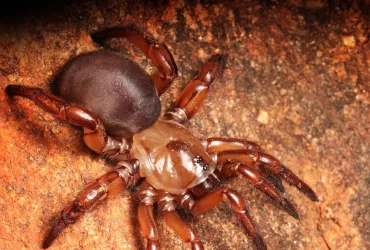 v14i1.348
v14i1.348eISSN: 1800-427X (online)
DOI:10.47605/tapro.v14i1.348
Submitted date: 27 July 2024
Accepted date: 28 March 2025
Published date: 20 April 2025
Pp. 16–24.
NEW SITE RECORDS FOR TWO DICROGLOSSID FROG SPECIES BASED ON THEIR TADPOLES FROM MANIPUR, INDIA
Yumkham S. Devi, Jayaditya Purkayastha & Saibal Sengupta*
*Corresponding author. E-mail: saibal.sengupta@dbuniversity.ac.in
Abstract
We document the occurrence of two species of the family Dicroglossidae from Kangchup Hills, Manipur, India, Fejervarya limnocharis and Minervarya sengupti. Fejervarya limnocharis is a widely distributed Asian dicroglossid frog with a complex taxonomy. This is the first time it has been reported in India, expanding its range significantly. The presence of Minervarya sengupti in Manipur also expands its distribution. We compare the morphology of their tadpoles, particularly focusing on their oral apparatus, which was examined using Scanning Electron Microscopy. We also report the results of a genetic analysis of the two species using 16S rRNA. Our findings underscore the importance of detailed morphological studies in clarifying species diversity and distribution within the family Dicroglossidae.
Key words : Fejervarya limnocharis, Minervaya sengupti, tadpole taxonomy, oral morphology
Section Editor: Daniel Escoriza
DOI:10.47605/tapro.v14i1.348
Submitted date: 27 July 2024
Accepted date: 28 March 2025
Published date: 20 April 2025
Pp. 16–24.
NEW SITE RECORDS FOR TWO DICROGLOSSID FROG SPECIES BASED ON THEIR TADPOLES FROM MANIPUR, INDIA
Yumkham S. Devi, Jayaditya Purkayastha & Saibal Sengupta*
*Corresponding author. E-mail: saibal.sengupta@dbuniversity.ac.in
Abstract
We document the occurrence of two species of the family Dicroglossidae from Kangchup Hills, Manipur, India, Fejervarya limnocharis and Minervarya sengupti. Fejervarya limnocharis is a widely distributed Asian dicroglossid frog with a complex taxonomy. This is the first time it has been reported in India, expanding its range significantly. The presence of Minervarya sengupti in Manipur also expands its distribution. We compare the morphology of their tadpoles, particularly focusing on their oral apparatus, which was examined using Scanning Electron Microscopy. We also report the results of a genetic analysis of the two species using 16S rRNA. Our findings underscore the importance of detailed morphological studies in clarifying species diversity and distribution within the family Dicroglossidae.
Key words : Fejervarya limnocharis, Minervaya sengupti, tadpole taxonomy, oral morphology
Section Editor: Daniel Escoriza
Hubungi Kami
The ultimate aim of the journal is to provide an effective medium for communication of the latest and best scientific information.
Copyright © 2020 Taprobanica. All Rights Reserved
Jasa Pembuatan Website by IKT




